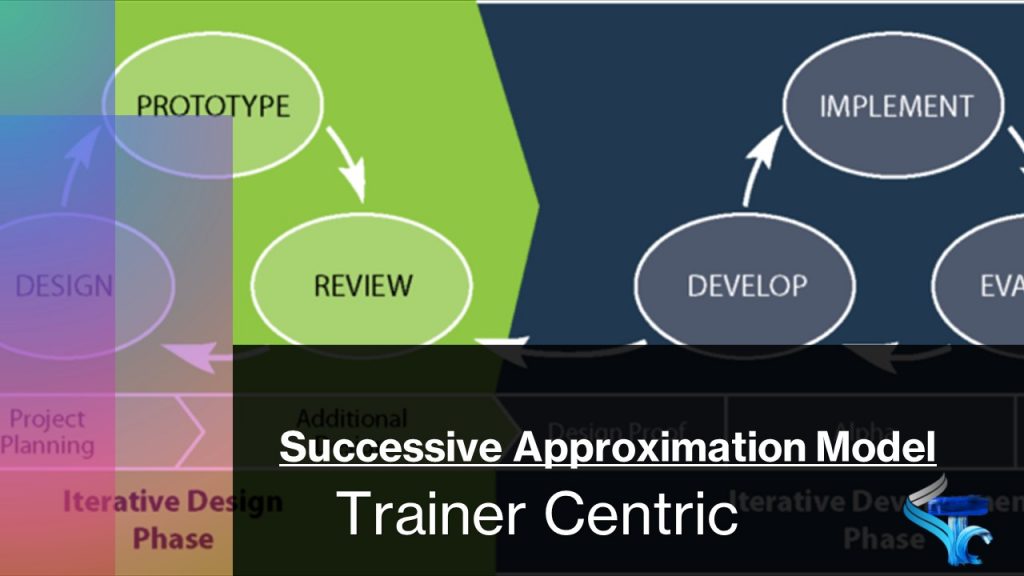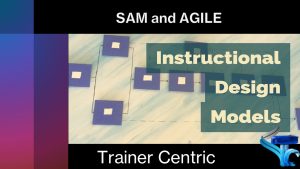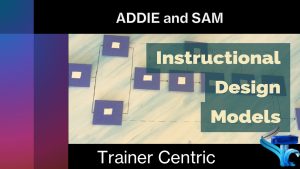
Welcome to our in-depth guide on harnessing this model to revolutionize eLearning. At the forefront of instructional design innovation, we are committed to unraveling the intricacies of this model and its transformative potential. In this comprehensive article, we delve into the nuances of this model implementation, its unparalleled benefits, and how it reshapes the eLearning landscape.
Decoding SAM method of Instructional Designing
This method of instructional designing, the acronym for SAM, is more than just a design methodology; it’s a paradigm shift that propels eLearning beyond conventional boundaries. Our mission is to empower educators and instructional designers to leverage it’s dynamic approach in crafting eLearning experiences that engage, educate, and evolve.
What Is Method of Instructional Designing: A New Way to Do eLearning
Central to it’s efficacy is its iterative cycle, comprised of three pivotal phases: Design, Develop, and Review. This cycle sets this model apart from traditional models by infusing flexibility, collaboration, and refinement at every step. Gone are the days of linear design; This model thrives on continuous enhancement, ensuring precision and relevance throughout the content creation process.
How to Use Successive Approximation Model: A Close Look
It works in three steps: Design, Develop, and Review. This is different from the old way, where we did things one after the other. It lets us change and improve our eLearning as we go, making it better each time.
Stage 1: Design – Planning Your eLearning

Design is where it all begins. This stage is like creating a blueprint before building a house. Here’s what you do:
- Understand Your Audience: Start by figuring out who will use your eLearning. Are they beginners, experts, or somewhere in between? What do they already know, and what do they need to learn?
- a. Define Your Audience: Start by creating learner personas. Describe their characteristics, such as age, education level, and prior knowledge. This helps you tailor the content to their needs.
- b. Identify Learning Objectives: Clearly outline what you want your learners to achieve. Define specific, measurable goals. For example, if you’re creating a course on computer programming, a goal could be “Learners will write a simple code script.”
- c. Gather Feedback: If possible, talk to potential learners or subject matter experts to gain insights into what they need from the eLearning.
- Set Clear Goals: What should your learners be able to do after completing the eLearning? Define specific objectives so you know what success looks like.
- a. Define Specific Goals: Make sure your objectives are well-defined. Use action verbs like “learn,” “demonstrate,” or “create” to describe what learners should do.
- b. Prioritize Objectives: Determine which goals are most important. This helps you allocate resources and time effectively.
- c. Align with Overall Goals: Ensure your eLearning objectives align with broader educational or organizational goals.
- Plan the Content: Decide what information, activities, and resources will be in your eLearning. Create a structure or outline to organize everything.
- a. Create a Content Outline: Organize your content into modules or sections. Each section should have a clear theme or topic.
- b. Storyboarding: Develop a detailed storyboard for each section. Include the content, interactions, and any multimedia elements like images or videos.
- c. Assessment Strategy: Plan how you’ll assess learner progress. Consider quizzes, assignments, or discussions.
- Create Prototypes: Think of prototypes as rough sketches. They’re like early drafts of your eLearning. Prototypes help you visualize how it will look and work.
- a. Sketch Layouts: Create rough sketches or diagrams of how each screen or page will look. This helps visualize the layout and flow.
- b. Design User Interactions: Define how learners will navigate through the eLearning. Design buttons, menus, and navigation paths.
- c. Get Feedback: Share your prototypes with stakeholders or potential learners. Their input can uncover design flaws or usability issues.
Stage 2: Develop – Bringing Your eLearning to Life

Development is where you turn your plan into reality. This stage is like building the actual house based on the blueprint:
- Use Different Media: Add text, images, videos, and interactive elements to make your eLearning engaging and informative. You can also add various types of content to your eLearning, such as text, images, videos, and interactive elements. Using different media keeps learners engaged and caters to different learning styles. For instance, if you’re teaching a language, you can include audio clips to help learners with pronunciation.
- a. Develop Content: Create the actual content for your eLearning modules based on the storyboard. Ensure it’s clear, concise, and engaging.
- b. Add Multimedia: Incorporate images, videos, audio, and interactive elements where appropriate. Use visuals to enhance understanding.
- c. Accessibility: Make sure your content is accessible to all learners, including those with disabilities. Provide alternative text for images and captions for videos.
- Create Interactivity: Make your eLearning interactive by adding quizzes, games, or activities. Interaction keeps learners engaged. Interactivity makes eLearning engaging. Incorporate quizzes, activities, simulations, or games to encourage active participation. For example, in a safety training course, you can include interactive scenarios where learners must make decisions on how to handle different situations.
- a. Design Activities: Develop interactive activities or exercises that reinforce learning. For example, in a language course, include pronunciation practice exercises.
- b. Gamification: Consider adding game-like elements such as points, badges, or leaderboards to boost engagement.
- c. User-Friendly Interface: Ensure your eLearning platform or interface is intuitive and easy to navigate.
- Stay Agile: One of the cool things about this model is that it’s flexible. If you get feedback or have new ideas, you can make changes easily during this stage. One of it’s strengths is its flexibility. If you receive feedback or have new ideas during the Develop stage, you can make changes without major disruptions. This agility ensures your eLearning remains relevant and effective.
- a. Continuous Testing: Regularly test your eLearning as you build it. This helps catch issues early.
- b. Gather Feedback: Encourage testers or subject matter experts to provide feedback. They can identify problems or suggest improvements.
- c. Iteration: Don’t be afraid to make changes based on feedback. it allows for flexibility and refinement during development.
Stage 3: Review – Making Your eLearning Perfect

Review is like checking your work to make sure it’s just right. Think of it as fine-tuning your house after it’s built:
- Test Your eLearning: Before sharing your eLearning with your target audience, test it yourself. Go through the entire course as if you were a learner. This helps you identify any issues with navigation, content flow, or interactivity.
- a. Thorough Testing: Go through your eLearning module systematically, just like a learner would. Test navigation, interactivity, and content flow.
- b. Identify Issues: Take note of any errors, glitches, or confusing elements you encounter during testing.
- Get Feedback: Before sharing your eLearning with your target audience, test it yourself. Go through the entire course as if you were a learner. This helps you identify any issues with navigation, content flow, or interactivity.
- a. Peer Review: Share your eLearning with colleagues or peers. Ask for their opinions on content clarity, engagement, and overall effectiveness.
- b. User Testing: If possible, have a small group of actual learners try your eLearning. Their feedback is invaluable.
- Fix and Improve: Based on the feedback, make necessary changes and improvements. This could involve revising content, fixing technical glitches, or enhancing interactivity. It allows you to iterate, so don’t hesitate to go back to the Design or Develop stage if needed.
- a. Address Issues: Based on the feedback received, make necessary revisions. Fix errors, clarify confusing content, and enhance engagement.
- b. Reiteration: This Model encourages going back to the Design or Develop stage if needed. Don’t hesitate to refine your eLearning further.
- Repeat If Needed: Based on the feedback, make necessary changes and improvements. This could involve revising content, fixing technical glitches, or enhancing interactivity. It allows you to iterate, so don’t hesitate to go back to the Design or Develop stage if needed.
Successive Approximation Model vs. Traditional Methods
SAM is different from traditional ways of making eLearning because it’s more flexible and adaptive. Traditional methods often follow a linear path, where you can’t easily make changes once you’re deep into development. It allows you to adjust and improve as you go, making your eLearning more effective.
1. Successive Approximation Model and Agile: A Synergistic Approach

It shares similarities with Agile methodology, a popular way of working in many industries. Both SAM and Agile promote flexibility, collaboration, and continuous improvement. This synergy means that this model can help you create eLearning that stays up-to-date and meets evolving needs.
The fusion of SAM and Agile leverages the strengths of both methodologies to enhance project outcomes. In this approach, it’s early prototyping and stakeholder collaboration complement Agile’s iterative development and adaptability.
Key Benefits of SAM-Agile Fusion
- Enhanced Collaboration: It’s emphasis on stakeholder involvement complements Agile’s focus on customer collaboration, resulting in a more engaged and informed project team.
- Iterative Refinement: The iterative nature of both approaches ensures continuous refinement and adaptation, leading to a more refined end product.
- Reduced Risk: By addressing issues and gathering feedback early and frequently, the SAM-Agile fusion minimizes the risk of costly project failures.
- Accelerated Development: This fusion promotes faster development cycles, accelerating time-to-market for products and features.
2. Systematic Approximation Model Vs ADDIE – A detailed comparison
Flexibility

SAM: It is highly flexible and iterative. It allows for ongoing refinement and adaptation throughout the design and development process. This flexibility is especially valuable when dealing with complex or rapidly changing content.
ADDIE: ADDIE is a more linear approach, where each phase must be completed before moving to the next. This can be less accommodating to changes or new insights that may arise during development.
Early Testing and Feedback
Successive Approximation Model: It encourages early and frequent testing of prototypes and course materials. This means that issues can be identified and addressed sooner in the process, reducing the likelihood of major revisions later on.
ADDIE: In ADDIE, testing typically occurs in the Evaluation phase, which means that issues may not be discovered until the end of the process, potentially leading to significant rework.
Stakeholder Involvement
SAM: It promotes collaboration and involvement of stakeholders, subject matter experts, and learners throughout the design and development stages. This ensures that the final product closely aligns with actual needs and expectations.
ADDIE: While ADDIE does include some stakeholder involvement in the Analysis and Evaluation phases, it may not be as integrated or ongoing as in this model.
Rapid Prototyping
SAM: It encourages the creation of prototypes early in the process, allowing stakeholders to see a tangible representation of the course and provide feedback. This can lead to quicker course development and better alignment with learner needs.
ADDIE: Prototyping is not a core component of ADDIE, and it is often implemented less frequently, if at all, during the design and development phases.
3. Successive Approximation Model Vs Kirkpatrick Model – A detailed comparison
Focus on Continuous Improvement:
SAM: This model emphasizes ongoing improvement and refinement of the learning experience. This aligns well with the Kirkpatrick Model’s Level 4 (Results) evaluation, which looks at long-term impact and continuous improvement.

Kirkpatrick Model: While the Kirkpatrick Model addresses four levels of evaluation, it can be challenging to implement continuous improvement effectively without a model like SAM that supports iterative development.
Alignment with Real-World Impact
SAM: This model’s iterative nature allows for quicker adjustments to training based on real-world performance data. This ensures that training remains relevant and effective over time.
Kirkpatrick Model: The Kirkpatrick Model focuses on evaluating training outcomes but may not provide specific guidance on how to adjust and improve training based on evaluation results.
Learner Centric Approach
SAM: This model places a strong emphasis on understanding learner needs and preferences throughout the design and development process, resulting in more learner-centric training.
Kirkpatrick Model: While the Kirkpatrick Model acknowledges learner reactions and satisfaction (Level 1), it may not provide as comprehensive a framework for creating learner-centered training.
In summary, SAM offers benefits over both ADDIE and the Kirkpatrick Model through its flexibility, emphasis on early testing and feedback, stakeholder involvement, rapid prototyping, focus on continuous improvement, alignment with real-world impact, and learner-centric approach. These advantages make Successive Approximation Model a compelling choice for modern instructional design and training development.

![The Power of Storytelling in Corporate Training: Igniting Success and Inspiring Growth [2023]](https://trainercentric.com/wp-content/uploads/2023/06/storytelling-1024x576.jpg)

